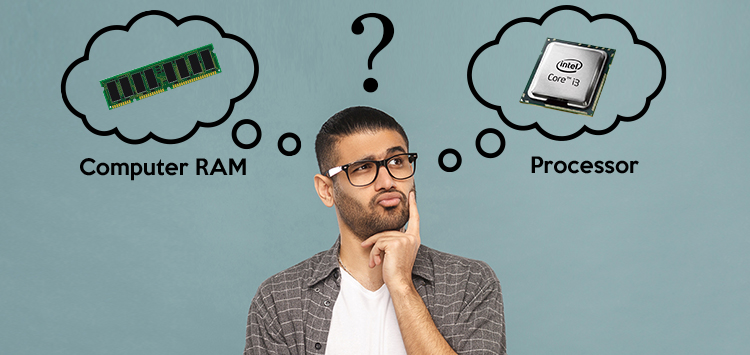
Modern computer users are even more dependent on their PCs’ performance. In quest to maintain and improve the efficiency of a computer, there are some set ways which can never go wrong like running a virus scan, defragmentation and more.
That said, computer is made up of several components. It is a no-brainer to understand that each component has its unique role to play. But oftentimes what we miss out is capability to gauge which component needs the upgrade first.
Computer connoisseurs believe there is no right or wrong answer to this question as it is subject to change with the use of your computer. While upgrading the processor can be right choice for some, RAM may have all the solutions to some other users’ problems.
It is time to unleash the factors contributing one’s choice in details.
Understanding Underlying Reason Of PC Sluggishness
Let us take an example of a computer user who runs multiple programs at one time. While doing this they realize slowdowns in programs in use. It further loads slowly when switch is made from one program to another. This largely indicates low RAM memory.
In order to confirm whether you are running low on RAM or not, you should make use of the best tool which is task manager built into windows. Windows 10 comes with enhanced task manager to show the users how much memory is used by every single application.
Windows has its own way of dealing with low RAM. When running on low RAM memory it swaps information to storage and memory is made available for programs. Furthermore, hard disks are even slower than RAM and performance suffers. Modern day solid state drives are very fast and they make swapping less of an issue, though it is somewhat noticeable.
Another case is of users using processor intensive applications like CAD, video rendering and video conversion. This is when they notice long processing times and system becomes too slow to the extent of becoming non-responsive. By this time, users check the task manager for checking on RAM memory only to find plenty of it available.
The next step should be to confirm the number of physical processing cores. Corei3 processors typically possess 2 physical processing cores and corei5 processors usually have 4 cores. Experts believe that with more number of cores users can perform more operations at the same time. Furthermore, some programs use several cores to perform faster.
Your computer is a sum total of functions of its components. Despite the fact that you have an exceedingly fast processor, if your system is starved of RAM it will still face performance issues. It is all about developing a little insight of your computer components. If you are too occupied to dig deep into technical matters, our proficient technicians can help, since for them, it is a matter of minutes.
